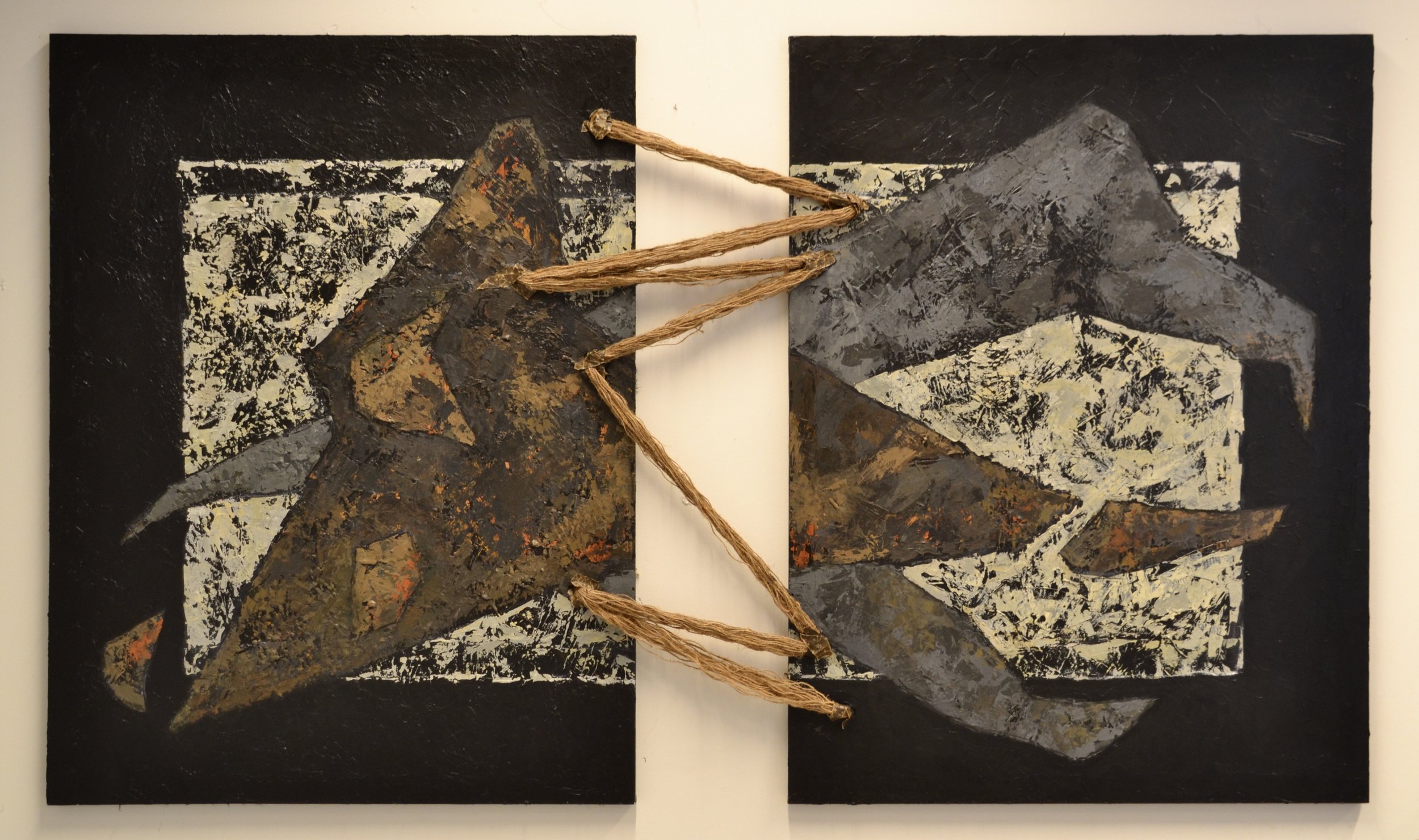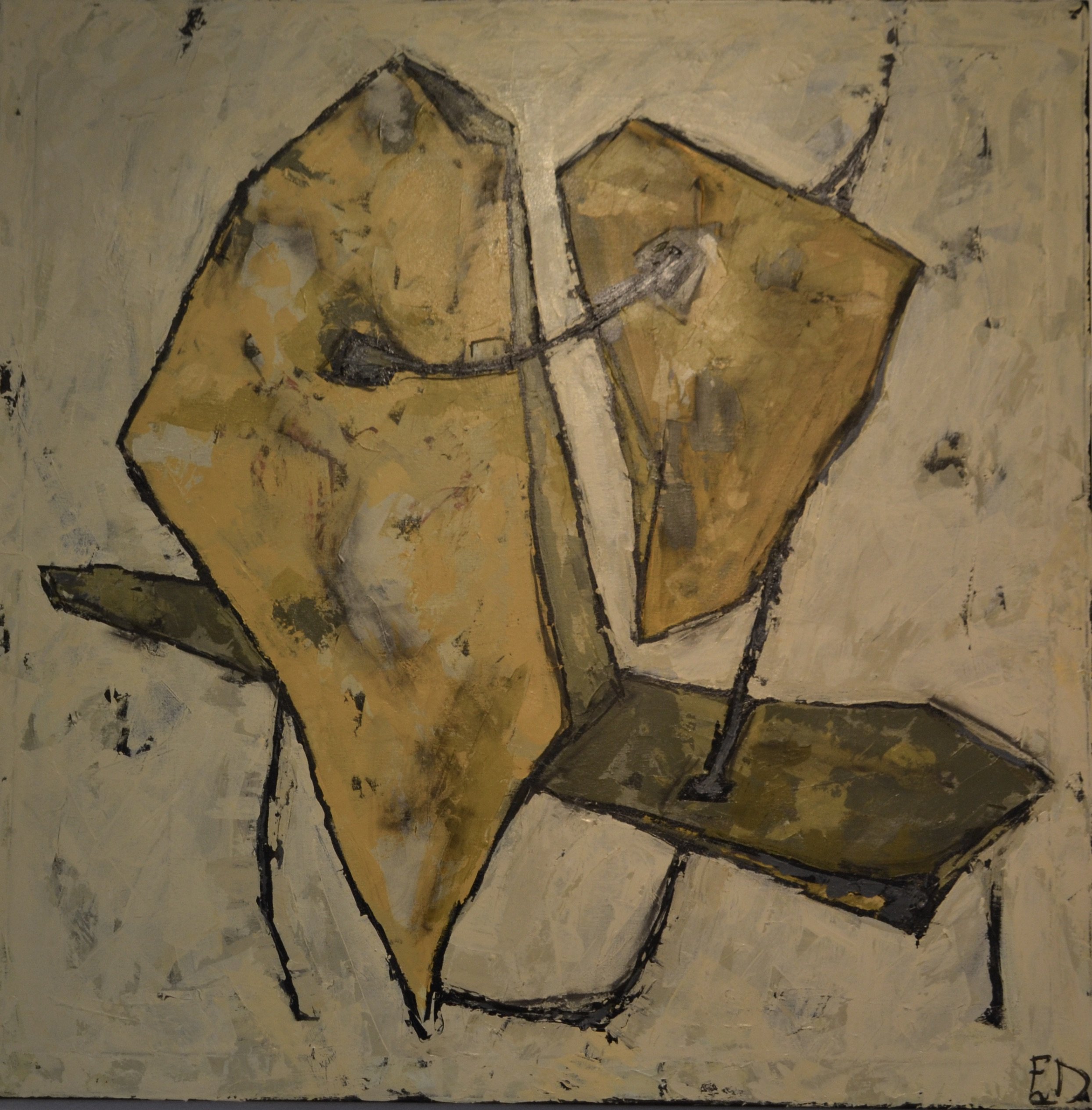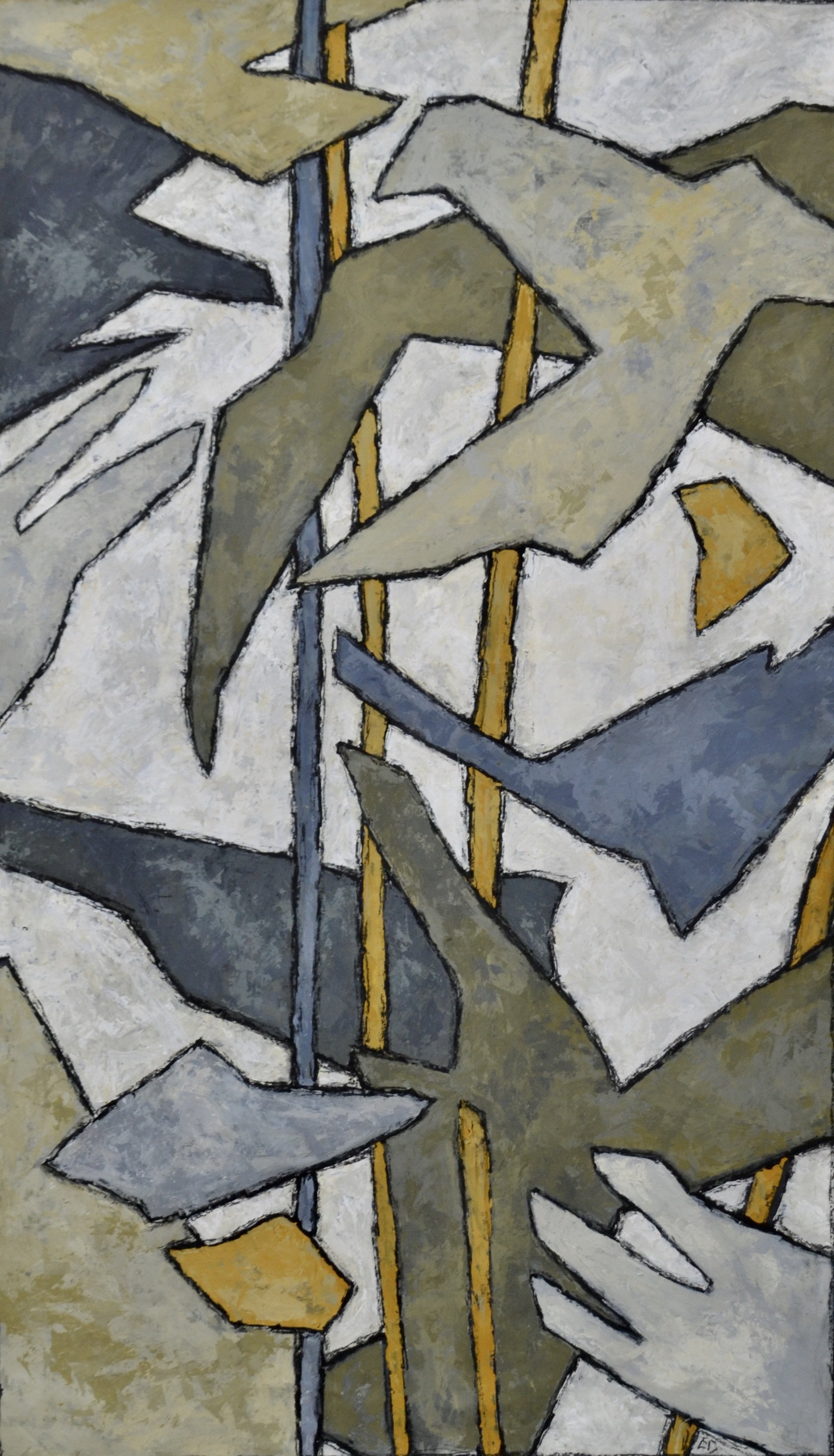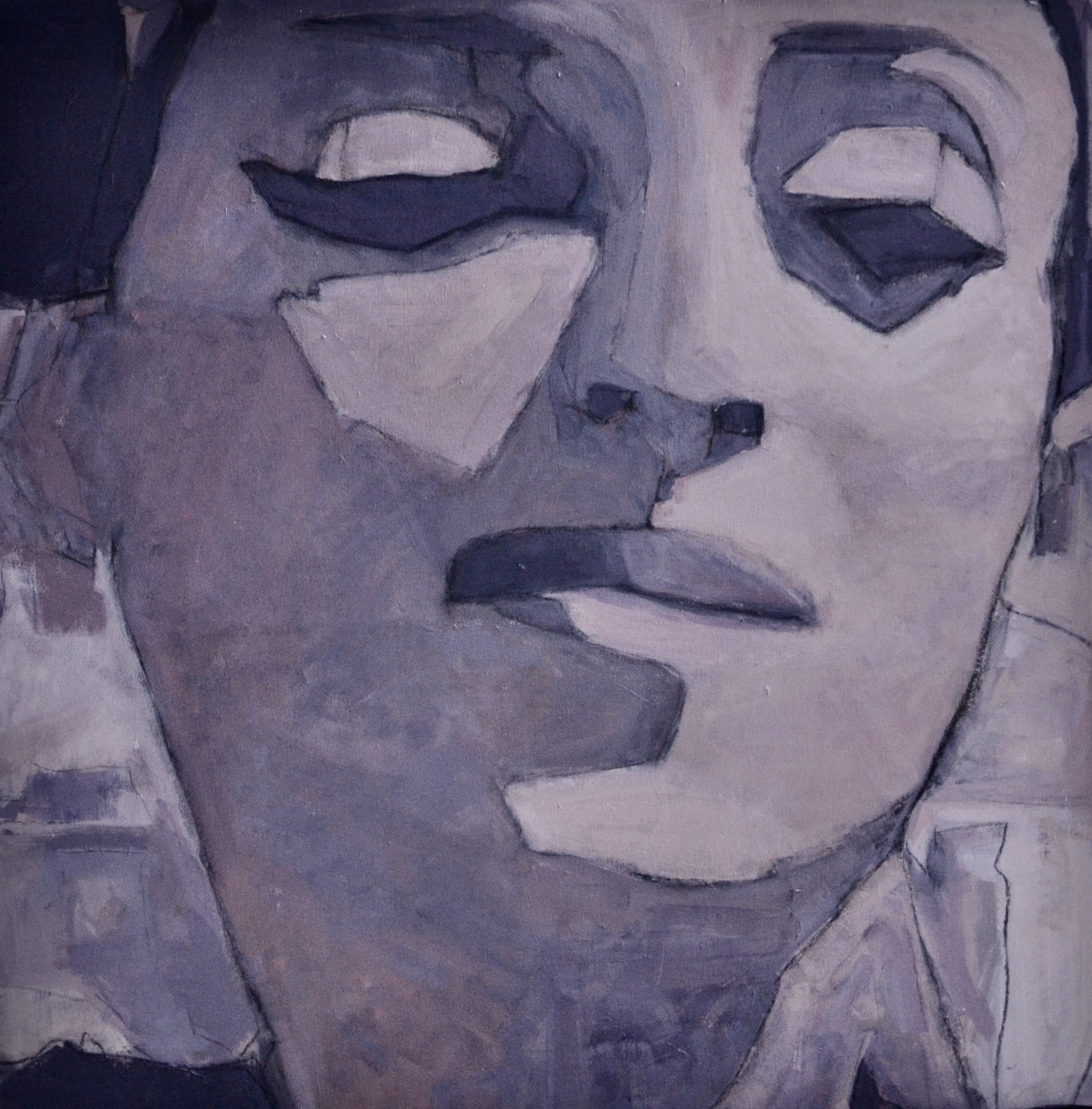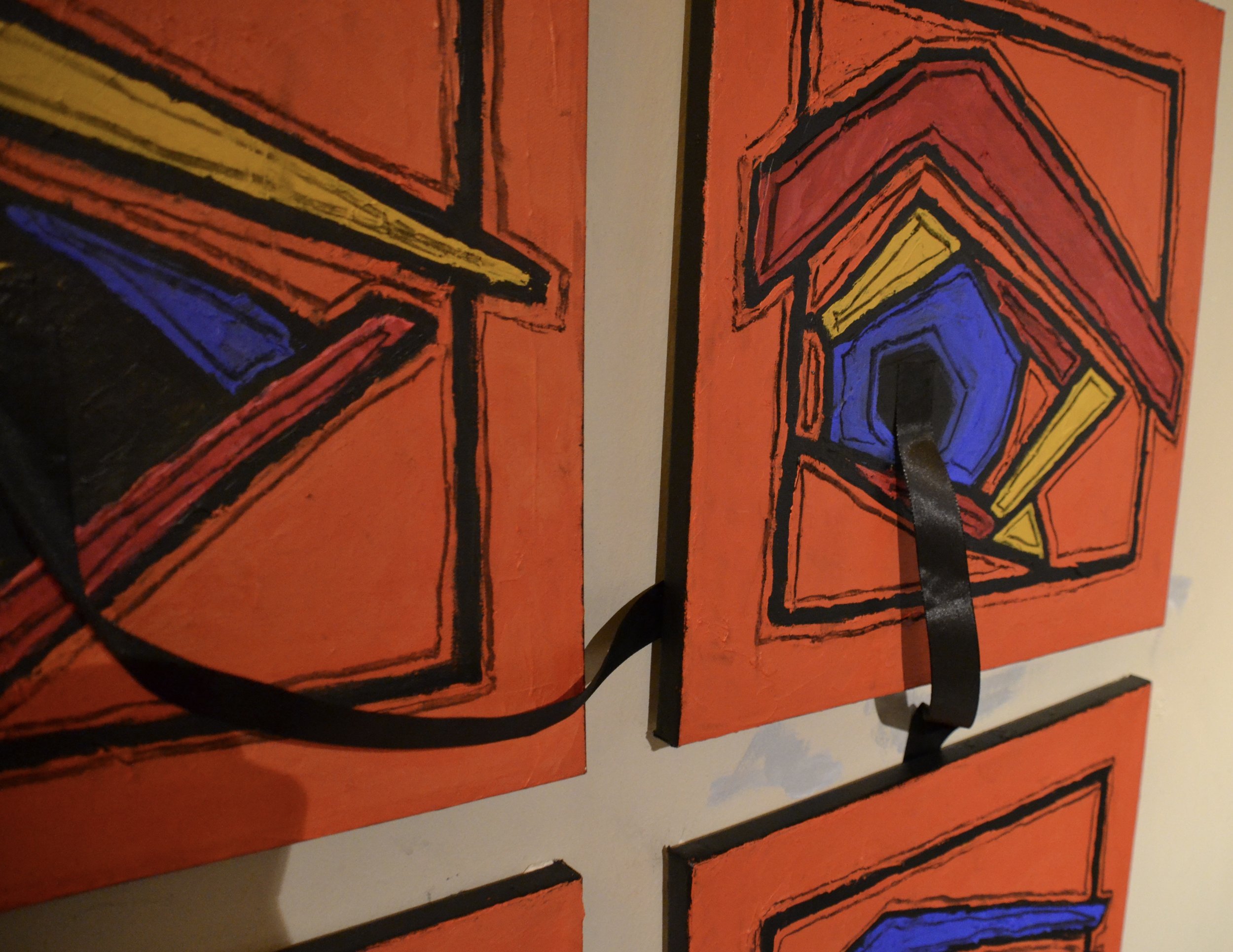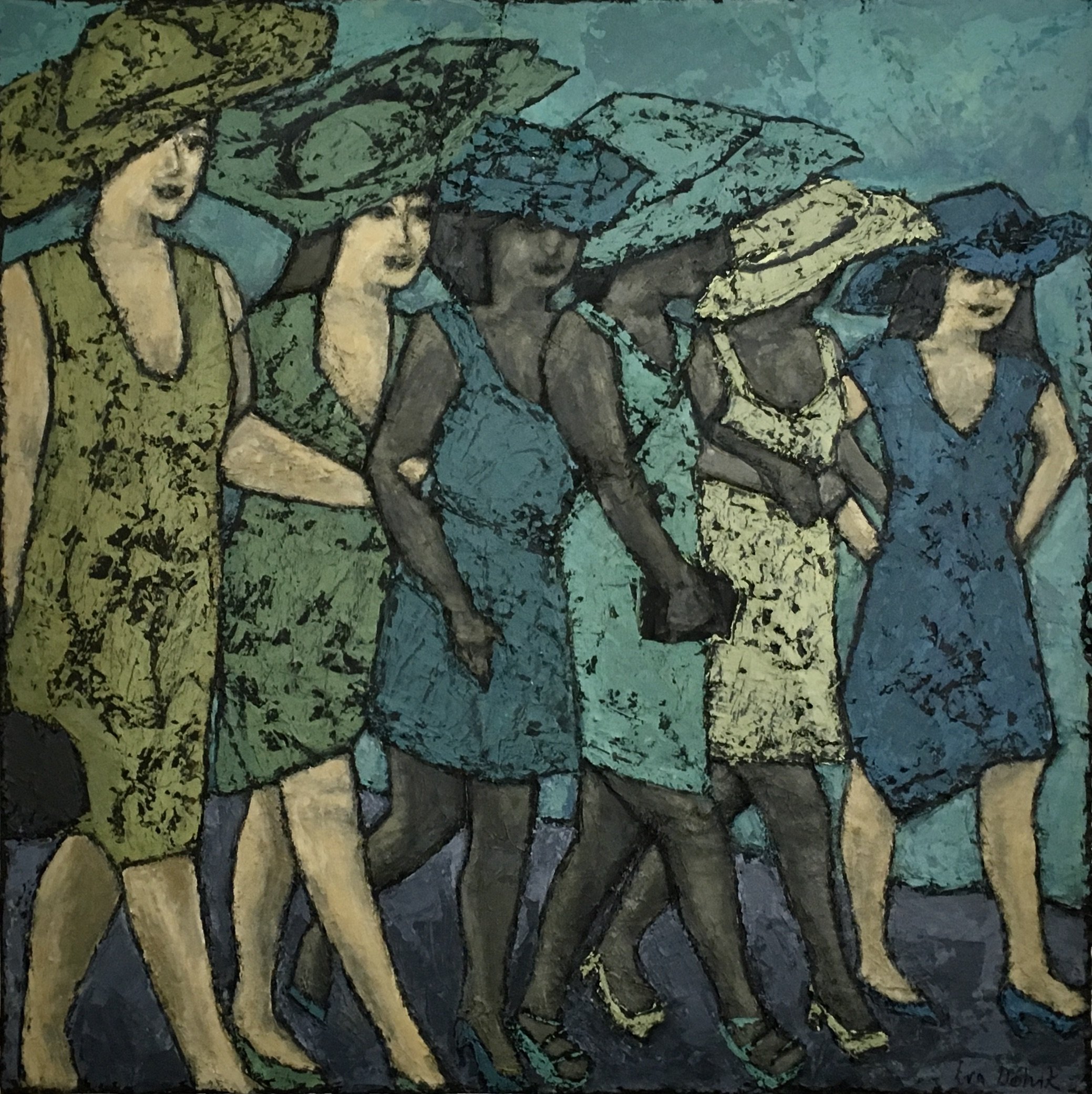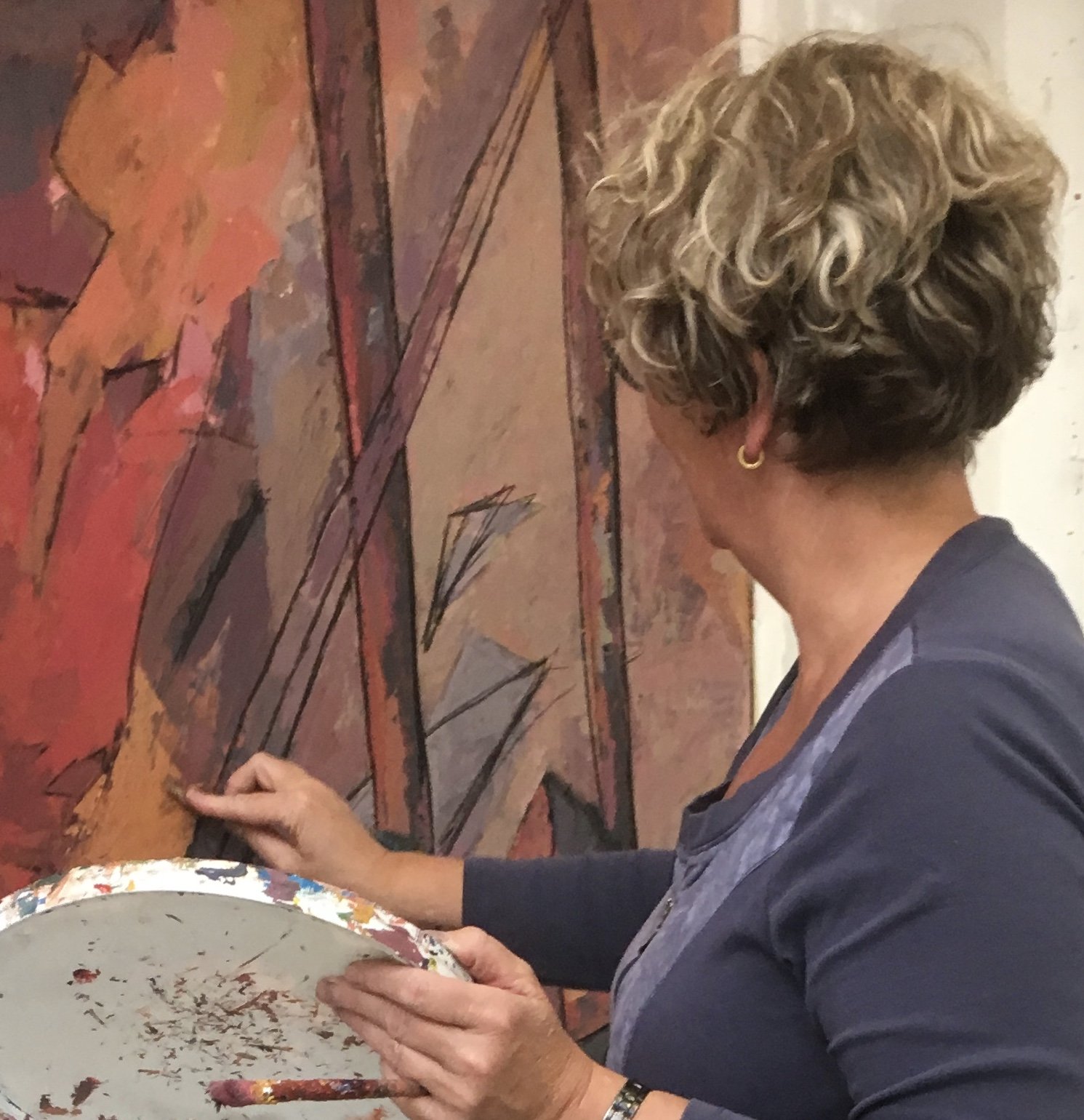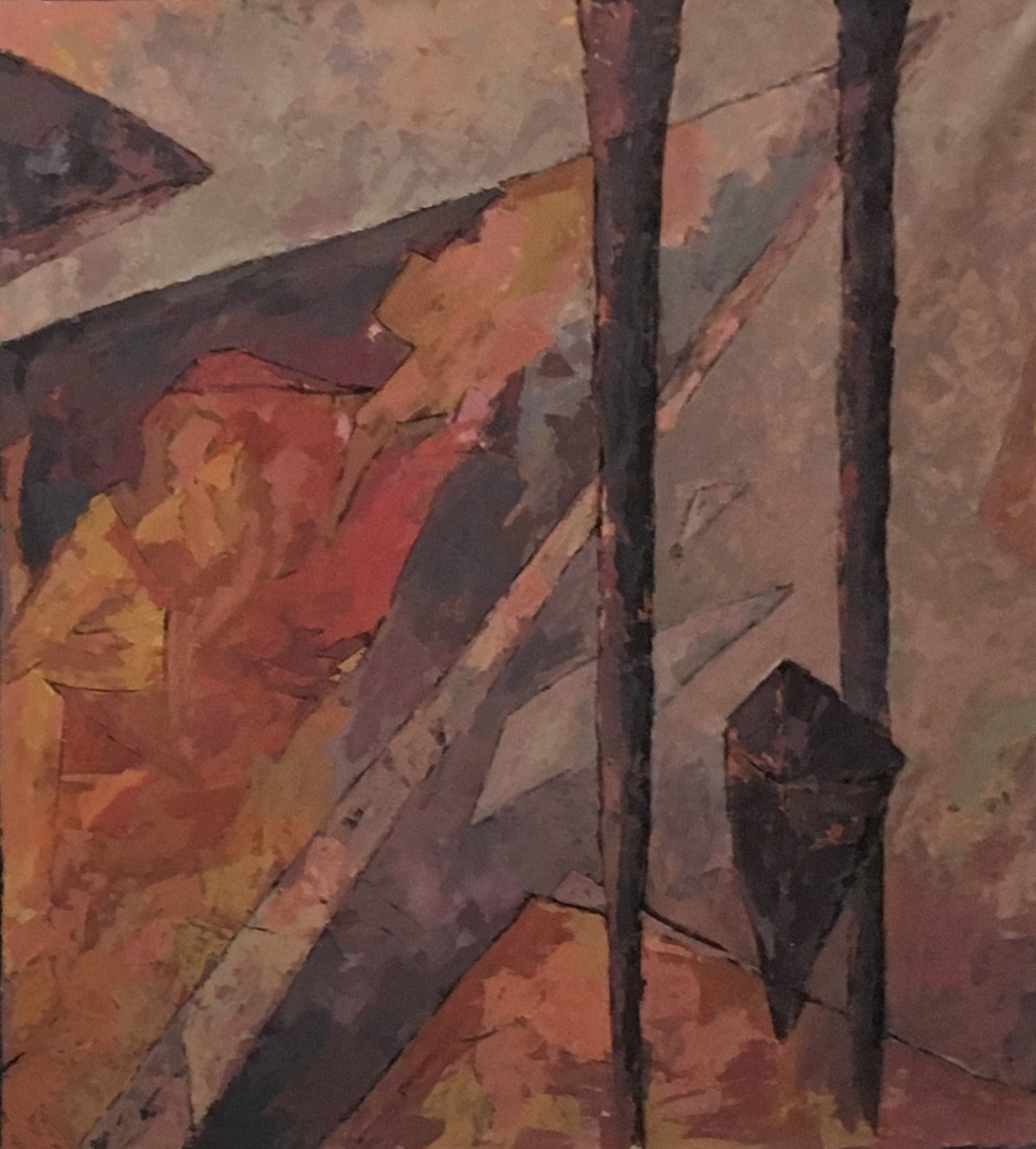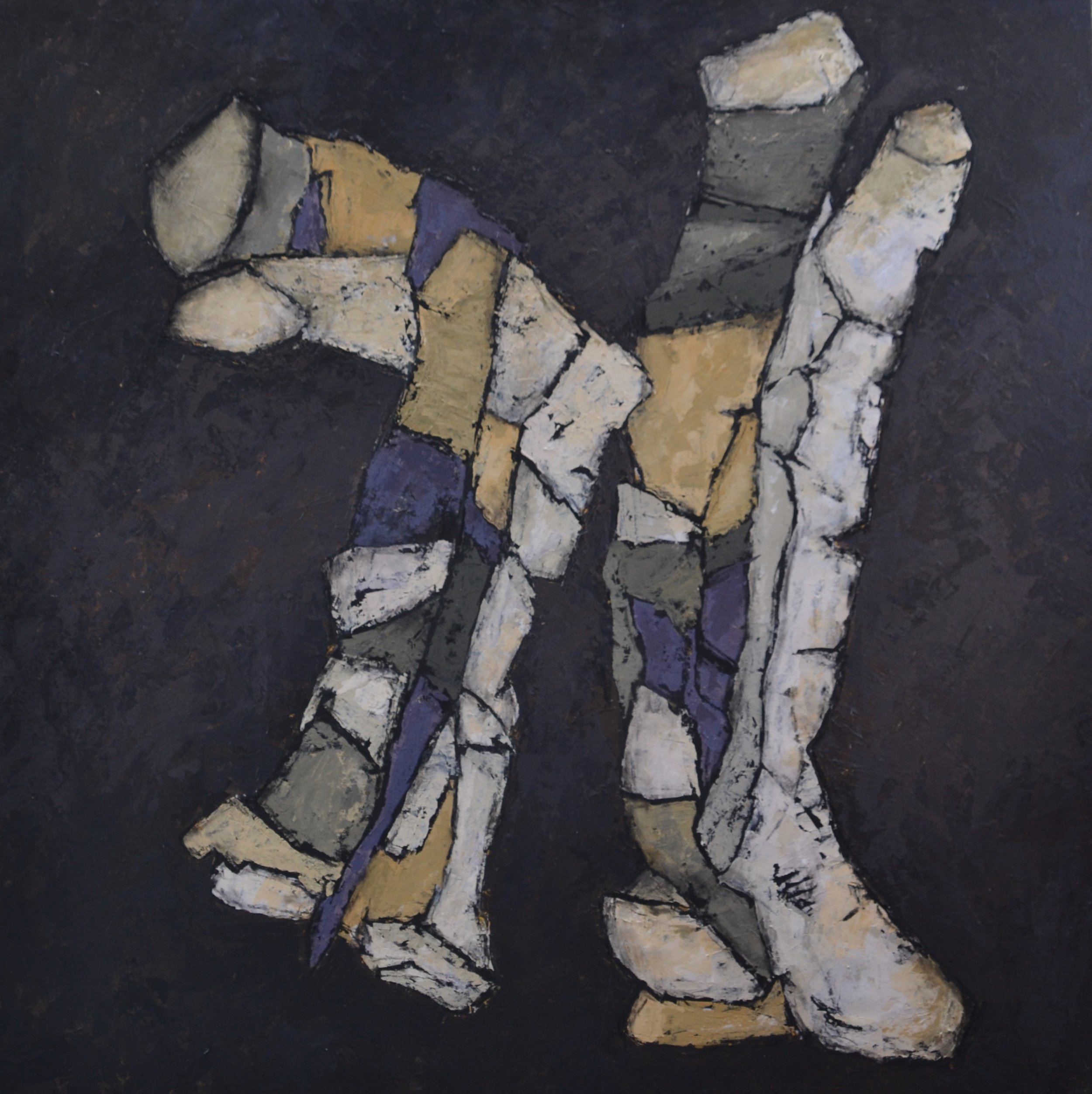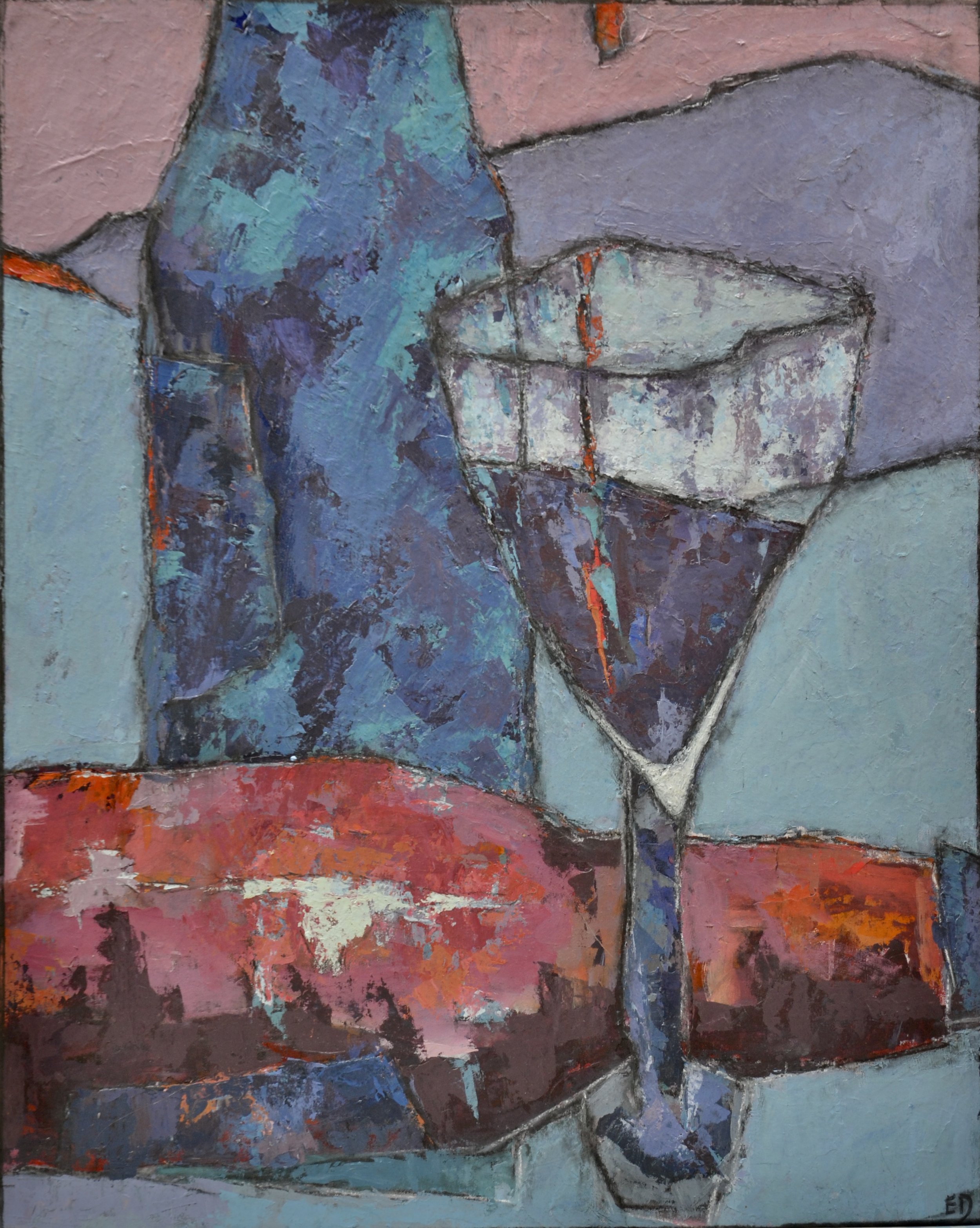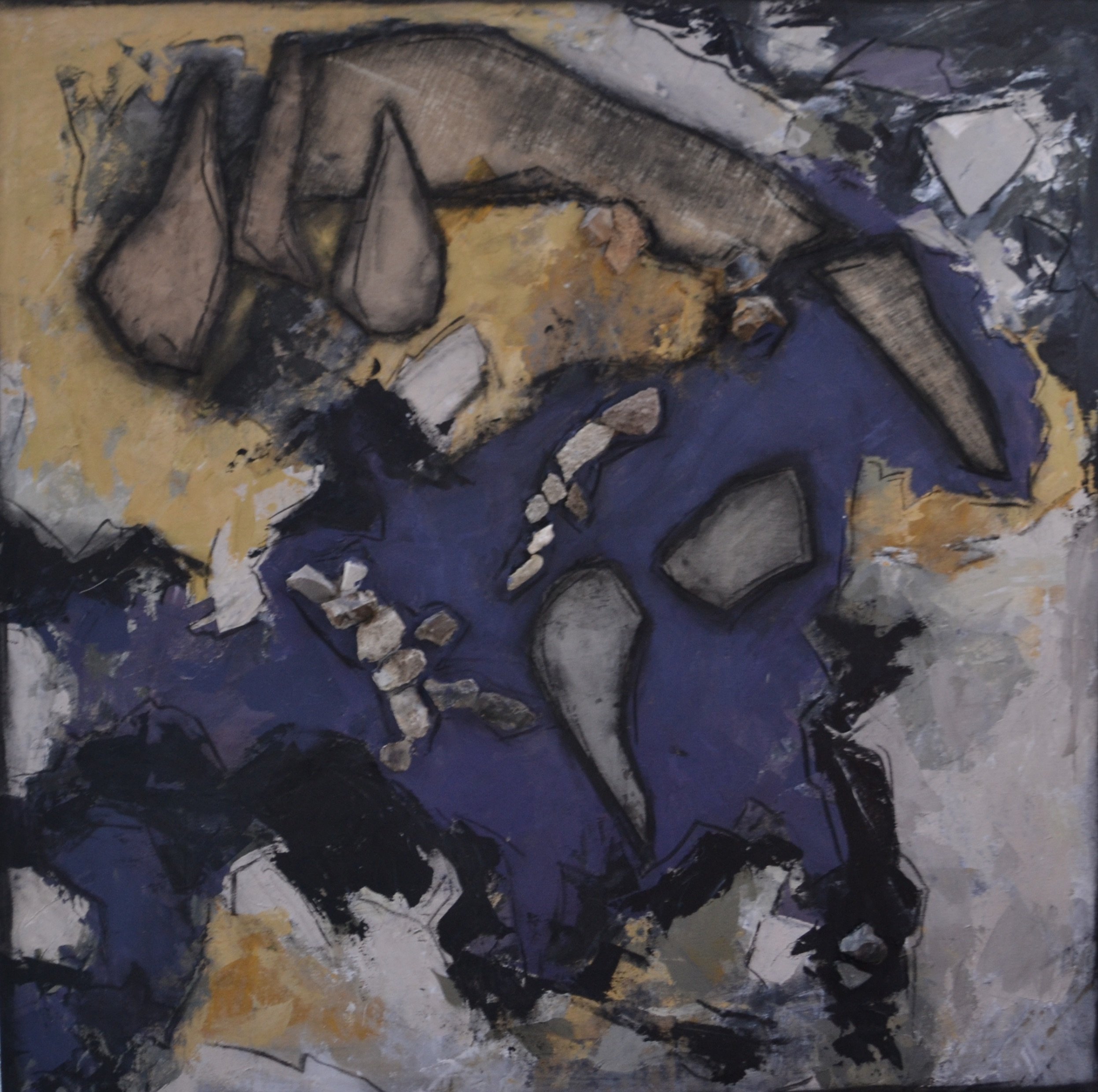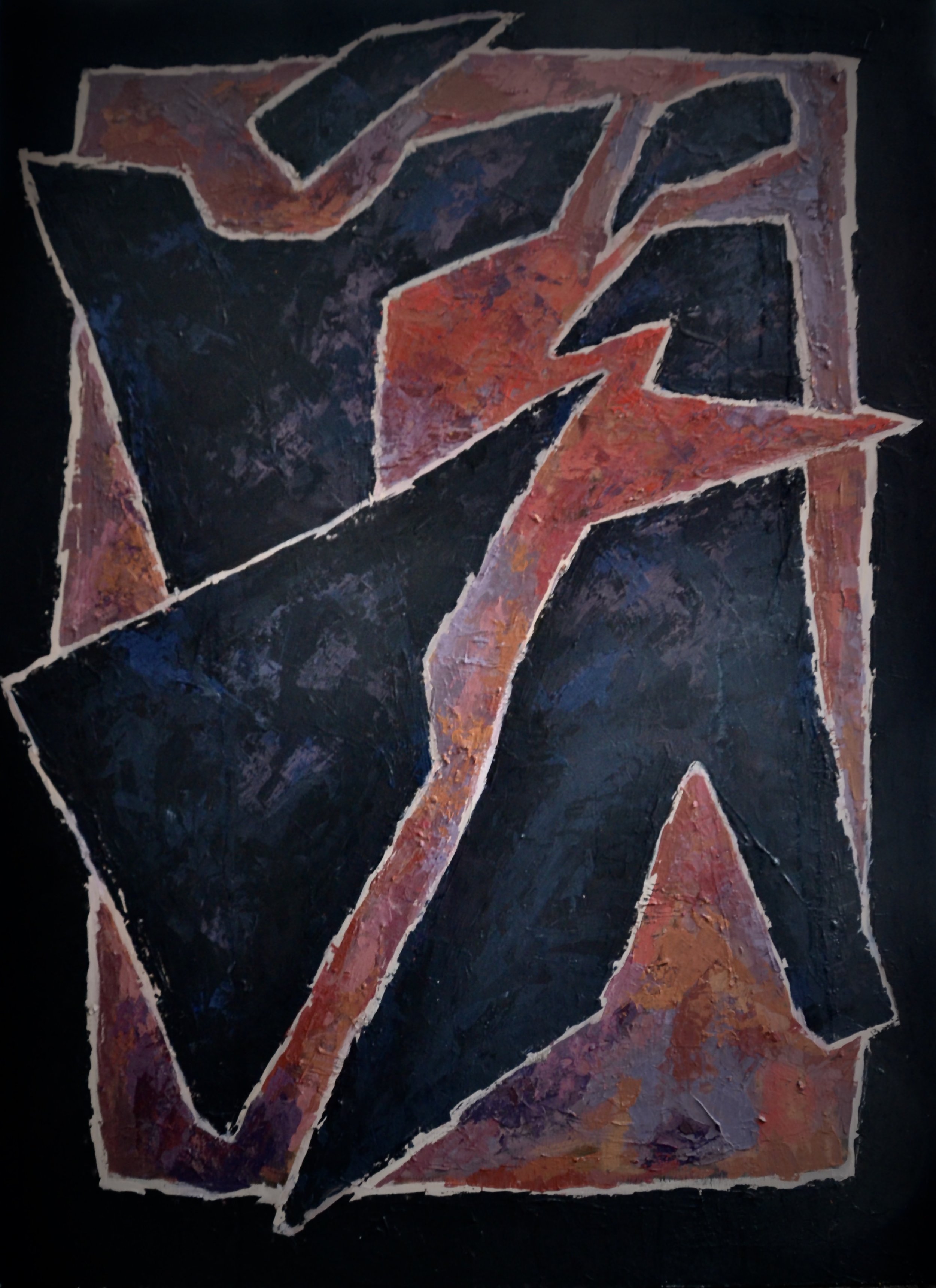Interview
Eva Dølvik
Patterns from rocks and mountains inspire Eva. She often uses her own nature photographs from her home surroundings in Norway to influence her acrylic paintings which normally are painted with many layers and a pallet knife to give a rough image. Charcoal and black lines often symbolise borders we meet or make in relations to most things in life. How we connect is an underlying theme in most of her paintings.
What is your background and how did you start your journey in the art world?
“I live in Drøbak, a small town, close to Oslo and my childhood town, Ski. My mother was an art teacher and I remember she introduced me and my siblings to different art projects at home. I especially remember she invited her friends and their kids to make puppet theaters with us. We made everything from sewing and designing the puppets to building the theatres. As an exchange student to California, at the age of 17, I joined art classes in photography, drawing and publications, and learned layout and composition which I think have had a strong impact on my art. As a young mother living in Greece, I met an art culture very different from my own. I also found the landscape on the northern Greek islands very beautiful, and at that time I spent much time with my camera and sewing machine, making textile landscape images decorating a hotel. Experiencing new cultures has given me a strong sense of curiosity to what it is that makes us humans the way we are, but also what it is that makes us create art the way we do, both individually and culturally. It has probably also made me curious trying out different art projects. It wasn’t until I turned 50, 12 years ago, that I really started painting. I have worked as a teacher for adult refugees and immigrants for more than 30 years now, and it´s challenging to find as much time as I want, to practice my art. I have been fortunate to have the opportunity to spend every summer holiday the last 10 years, getting professional training at the Kunsthøjskolen i Holbæk (art school in Denmark). Even though I love my teaching career, I think I finally will choose to be an artist full time very soon. Something inside me is telling me to paint much more and try out new creative projects.”
What inspires you?
“Driving on the highway! We do have a lot of rocks and mountains where I live – and rain! Along the many highways there are many scares in the mountains after building roads. These scares and cracks, when raining, often show many beautiful pallets and colors. It’s like a beautiful abstract painting! I tell my friends that I am dangerous when I pass these places, looking more at the rock patterns than on the traffic! I am also inspired by “less is more” and how to simplify what I see, how to make an object into abstract shapes. I guess it’s because I enjoy working with composition, almost tearing apart what really is and making my new own limits. It’s like trying out how far I can go to keep a composition that works. I like to explore and create and have never been able to follow a recipe! I change it and make it my own. This applies to my art as well. Strict architecture and square shapes give me a feeling of peace and beauty.”
What themes do you pursue? Is there an underlying message in your work?
“Geology is a subject that I find enormously interesting. Being quite philosophic, I think a lot of what life is, how it started and how we humans choose to make our lives. The earth, how it is made and how it continues to change, with all its power, must have an enormous impact both consciously and unconsciously on humans and cultures, even politics. Geology, time, human and cultural choices and connections are keywords in most of my art. Lately, several of my paintings have the title “Connected.” I’ve chosen the title because I want the observer to start thinking about his or her role in relation to the different themes I mentioned above. How are we connected to others, history, nations, time and the earth? I believe we are all connected one way or another. My often used black lines of charcoal in my paintings have become a symbol of borders, to me. When and why do we make borders? Sometimes they are for the good, other times they make terrible distance and alienation among people.”
How would you describe your work?
“My paintings vary, but I always paint with acrylic paint. Most of them have relatively big formats, lots of color and dominant shapes and lines. Layers of thick paint and often black lines make many of my paintings quite dominant and visible. Despite an underlying theme, my abstract paintings express something that the observer can interpret in different ways, while the more figurative paintings and my portraits are usually in a semi-abstract style.”
Which artists influence you most?
“I love Picasso’s art! I also admire some Norwegian artists like Ole Kristian Sjølie, Inger Sitter, Else Hagen, Synnøve Anker Aurdal, Odd Tandberg and Kai Fjell. Their strict shapes, great compositions and robustness really speak to me.”
“My paintings vary, but I always paint with acrylic paint.”
What is your creative process like?
“Sometimes, my artwork is a result of just playing around with colors and shapes. If I come to a stage where I like it, I might stop, or continue to make it into one of the themes I like to express. It might have a subtle message, or I might make it into a semi-abstract expression. Other times, I have a theme in my mind before I start and try out different shapes to express my exact feelings to my specific chosen theme. Big formats make it easier for me to express power and strength by using huge and relatively quick body movements and rhythm when I add paint to the surface.”
What is an artist’s role in society and how do you see that evolving?
“I think it’s more and more important to give artists focus in society. In a world where many people at all ages suffer from stress, self-judgement and competition, I hope that artists can be role models and creators for just the opposite! I will quote the Danish art-school “Kunsthøjskolen i Holbæk” where I got my training. The school motto says: “Art ought to have more focus in society. Creating free space, art makes us more human and the world a better place to be.” I couldn’t agree more! Then it´s sad to know that in my country for instance, many artists find it difficult to get enough income by working as an artist alone. My experience working with traumatized refugees, tells me that being allowed to create and play with art under the guidance of an artist has a huge advantage for people when it comes to coping with bad experiences. I think it is more important than ever before, that we, the artists just keep on believing in what we do and continue our important work!”
Have you had any noteworthy exhibitions you'd like to share?
“In 2020, I exhibited at the juried and annual exhibition arranged by The Norwegian Association for Independent Artists (NFUK). Due to Corona restrictions the exhibition was digital. In 2021 I exhibited again with the same association and the exhibition was at the Vestfossen Kunstlaboratorium. These exhibitions are normally arranged one new place each year and in 2024 it will be held in the city of Molde. I am applying and hoping the best! Otherwise, I usually exhibit annually at different Art Associations in my region.”
Website: www.galleriblikk.com
Instagram: @evadolvik


